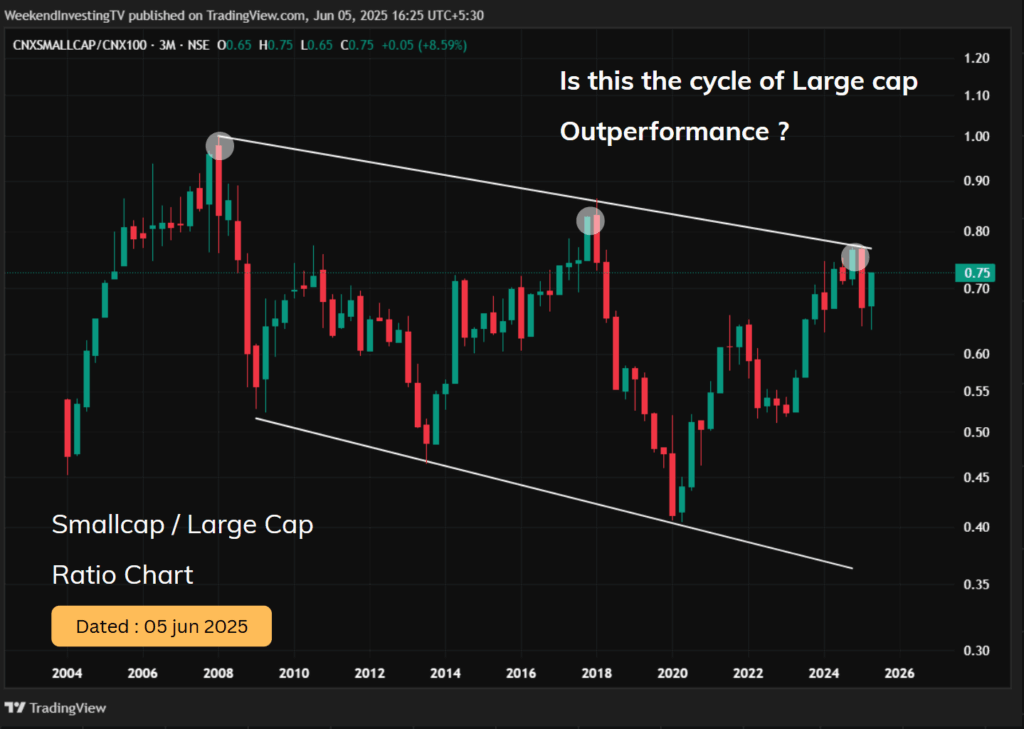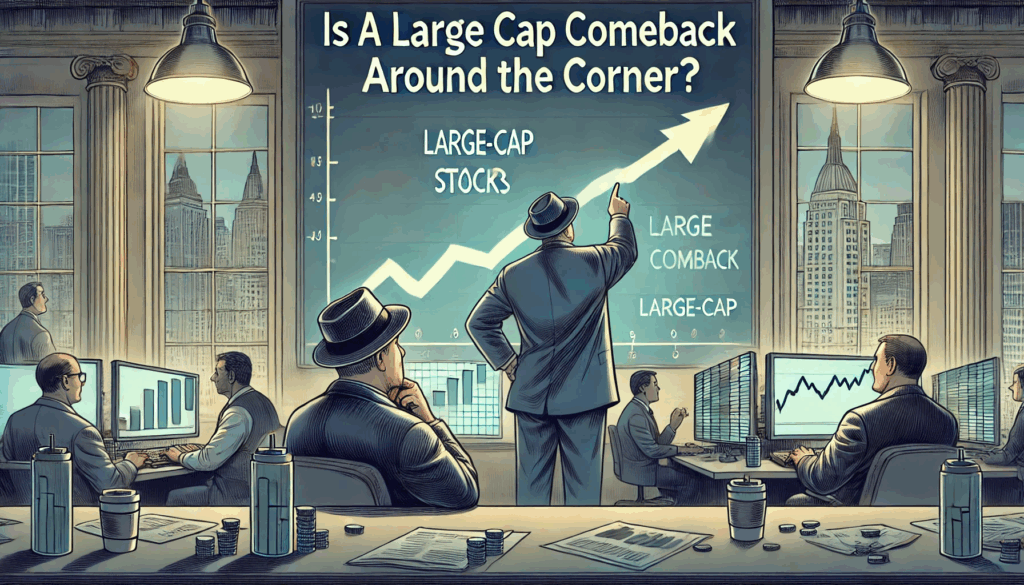Small Caps vs. Large Caps: Insights from the Ratio Chart
Investors frequently ponder when it’s best to favor small-cap stocks over large-cap ones. A valuable tool for this analysis is the ratio chart—comparing the CNX Small Cap Index to the CNX100 Index. This ratio helps illustrate the performance of small caps relative to large caps and reveals some intriguing long-term patterns.
Historical Range of the Small Cap to Large Cap Ratio
Over the past 15 to 17 years, this ratio has typically fluctuated between a low of around 0.40 to 0.45 and a high of approximately 0.80 to 1.00.

The pattern has remained within a broad channel, reflecting the cyclical nature of the relative performance between small-cap and large-cap stocks.
The Rise and Fall of Small Caps
From 2004 to 2008, small caps clearly outperformed large caps. However, during market downturns, they also experienced sharper declines. This tendency for small caps to exhibit high-beta behavior has persisted across various market cycles, with small caps leading during bullish phases but underperforming during corrections.
Shifting Momentum Between Small and Large Caps
Between 2010 and 2013, large caps took the lead, gaining more steadily than small caps. Since then, the momentum has shifted back and forth, with each group alternating in leadership. This ongoing alternation highlights the cyclical trends in market capitalization.
Are We Approaching Another Reversal Point?
Currently, the ratio chart indicates signs of exhaustion in small caps’ outperformance. While there may be some upside potential remaining, the long-term trend suggests a possible reversal.
Implications for Investors
Understanding these long-term ratio movements can aid in making informed asset allocation decisions. As always, context and timing are crucial in investment strategies.
Have you utilized ratio charts in your market analysis? Share your experiences in the comments below! If you found this blog useful, feel free to SHARE it with fellow investors.










